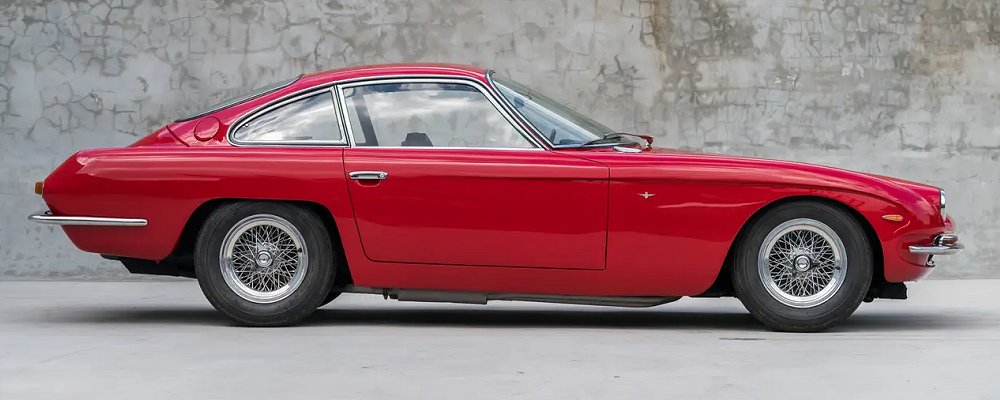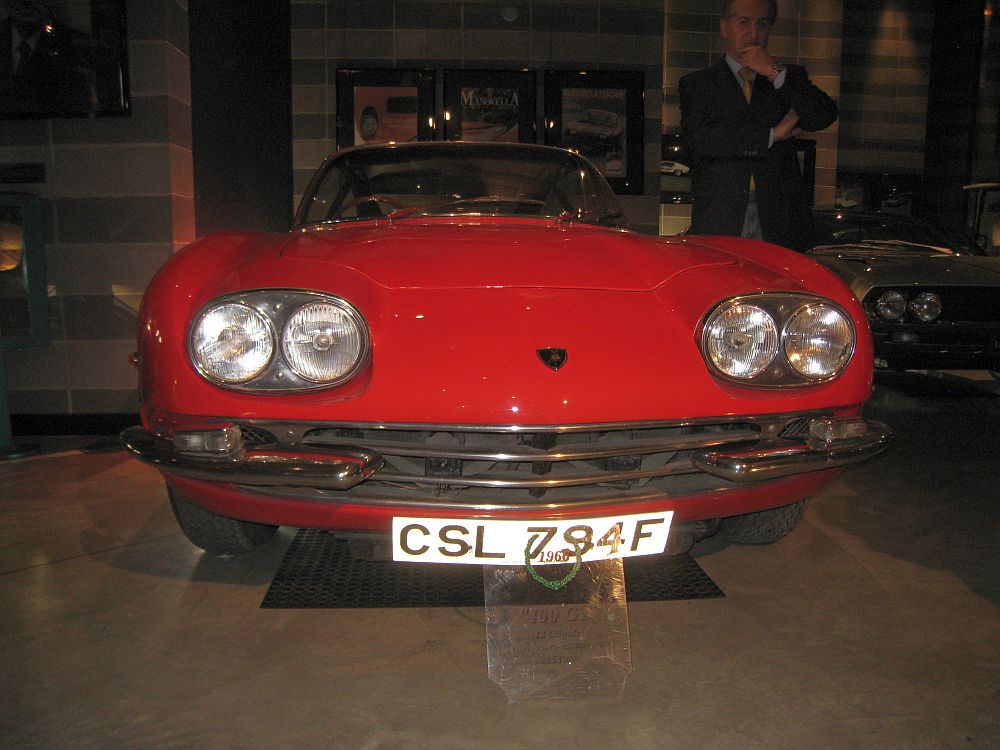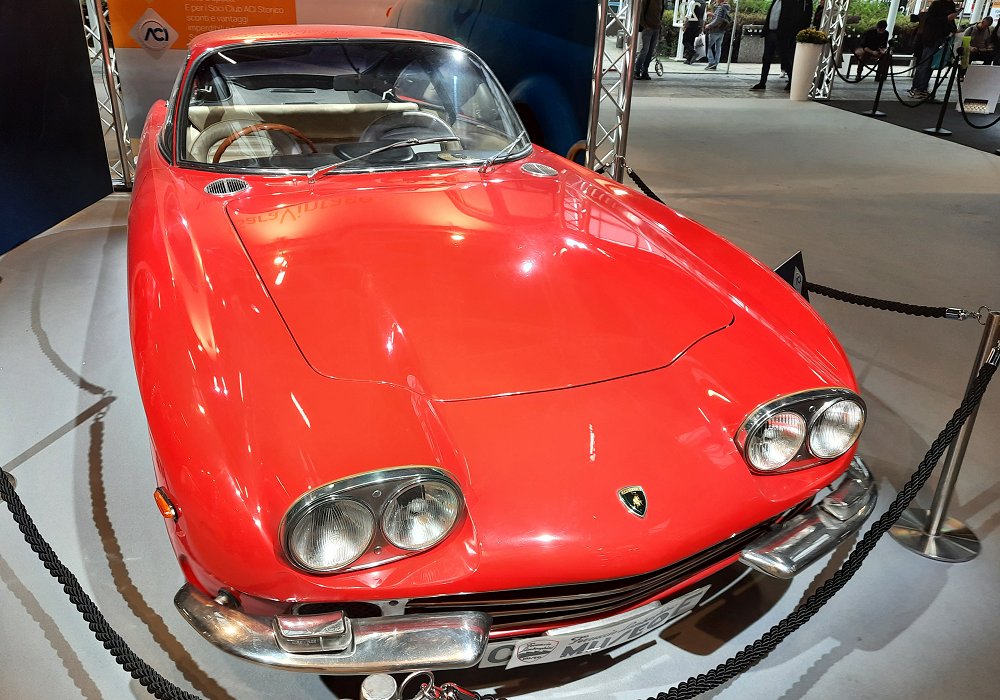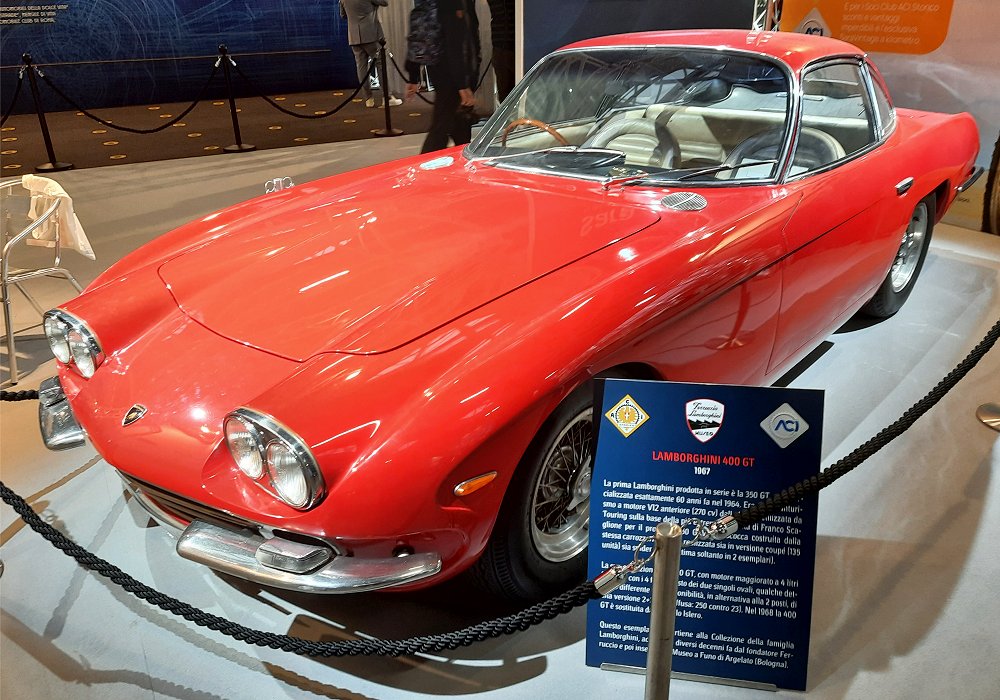Description
The Lamborghini 400 GT 2+2 was the car that firmly established Lamborghini as a world-class builder of grand touring automobiles. Introduced in 1966 as the successor to the 350 GT, it was the company’s first true production model—refined, powerful, and capable of carrying four passengers in comfort while maintaining the speed and sophistication expected of a hand-built Italian exotic. With its enlarged V12 engine, beautifully evolved Touring bodywork, and remarkable drivability, the 400 GT 2+2 became the foundation on which Lamborghini’s reputation for excellence was built.
By the mid-1960s, Ferruccio Lamborghini’s young company had already made an impression with the 350 GT. That car had proven that a new manufacturer from Sant’Agata Bolognese could rival Ferrari and Maserati in performance and surpass them in build quality and refinement. But Ferruccio wanted something more practical—a car that could blend supercar performance with genuine touring comfort. The result was the 400 GT 2+2, introduced at the 1966 Geneva Motor Show. It was an evolution rather than a radical redesign, but it refined every aspect of the earlier model, making it one of the most complete grand tourers of its era.
The heart of the 400 GT 2+2 was its enlarged 3,929 cc V12 engine, an evolution of the Bizzarrini-designed 3.5-litre unit from the 350 GT. With four overhead camshafts, six twin-choke Weber carburetors, and an all-aluminium construction, it produced 320 horsepower at 6,500 rpm and 390 Nm of torque. The engine’s refinement was exceptional—it idled smoothly, revved willingly, and produced a rich, metallic note as it climbed toward its redline. Mated to Lamborghini’s own five-speed manual gearbox, the V12 gave the car impressive performance: 0 to 100 km/h (62 mph) in around 6.8 seconds and a top speed of 155 mph (250 km/h). Yet despite its pace, it was never harsh or temperamental; the engine’s delivery was fluid and composed, reflecting Ferruccio Lamborghini’s insistence that his cars should be as effortless to drive as they were fast.
The 400 GT’s chassis, designed by Gian Paolo Dallara, used a steel tubular frame with fully independent suspension—double wishbones, coil springs, and telescopic dampers at all four corners. Girling disc brakes provided strong stopping power, and the car’s 1,450 kg weight was distributed evenly for balanced handling. The ride quality was supple and refined, soaking up poor road surfaces while maintaining stability at high speeds. The steering, light and precise, gave the car a sense of nimbleness that belied its size, and its road manners were praised by journalists across Europe for their combination of comfort and control.
Visually, the 400 GT 2+2 retained the graceful proportions of the 350 GT but was subtly reworked by Carrozzeria Touring to accommodate the additional rear seating. The roofline was raised and lengthened, and the windscreen given a slightly more upright angle. These changes were executed with great finesse—the car lost none of its elegance, and the longer, higher body actually gave it a grander, more mature presence. The design remained timeless: a long bonnet, gently curved waistline, and a tapering tail that expressed motion even at rest. Chrome accents outlined the windows and grilles, while the round headlamps—replacing the earlier oval units—gave the front end a distinctive, modern look.
The 400 GT’s body was built using Touring’s patented “Superleggera” technique: aluminium panels over a lattice of thin steel tubing. This construction kept the weight low and allowed the car’s form to remain clean and fluid. The panel fit and finish were exceptional for the time, with tight tolerances and deep, lustrous paintwork. Each car was hand-assembled with painstaking care at the factory in Sant’Agata, reflecting Lamborghini’s commitment to quality.
Inside, the 400 GT 2+2 offered a level of luxury rare even among Italian exotics. The cabin was trimmed in soft Connolly leather, with deep bucket seats in the front and two occasional seats in the rear—making it one of the few high-performance GTs that could genuinely accommodate four passengers. The dashboard featured an array of Jaeger instruments housed in a polished aluminium fascia, while the wood-rimmed Nardi steering wheel and chrome switchgear gave the interior a sense of craftsmanship and warmth. Air ventilation, sound insulation, and overall ergonomics were carefully considered, making the 400 GT not only a fast car but also a comfortable one for long-distance travel.
On the road, the car’s character reflected Ferruccio Lamborghini’s philosophy perfectly. It was powerful but refined, thrilling but civilised. The V12 engine delivered its performance with turbine-like smoothness, and the gearbox’s ratios were perfectly matched to the engine’s flexibility. The independent suspension gave the car remarkable poise, and it felt stable and composed even at high speeds. Unlike many of its contemporaries, the 400 GT 2+2 could be driven easily in traffic or through cities, its clutch and throttle light enough for everyday use. Yet, when the road opened, it transformed into a thoroughbred grand tourer, devouring miles with effortless composure.
The 400 GT 2+2 quickly gained praise from critics and enthusiasts alike. It was described as “a car of rare balance,” equally suited to fast touring or relaxed cruising. It cemented Lamborghini’s reputation as a manufacturer of technically advanced, beautifully made automobiles—one that could rival or even surpass Ferrari in sophistication. Over its production life, from 1966 to 1968, 247 examples were built, making it Lamborghini’s first true production success.
Today, the 400 GT 2+2 is celebrated as one of the finest grand tourers of the 1960s and a cornerstone of Lamborghini’s legacy. Its design remains timeless, its engineering still impressive, and its driving experience as rewarding as ever. The car represents the moment Lamborghini became more than a promising newcomer—it became a marque defined by excellence, confidence, and individuality.
The Lamborghini 400 GT 2+2 stands as the embodiment of Ferruccio Lamborghini’s vision: a car that offered all the performance of a racing machine with the grace and comfort of a luxury tourer. It was not built for the racetrack, but for the open road—a car that could cross continents with speed, beauty, and unshakable composure.








